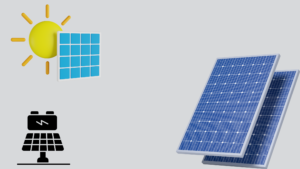
Solar systems are a fascinating and complex astronomical phenomenon, providing an array of possibilities for exploration. A solar system is made up of one or more stars, planets, moons, asteroids, comets and other objects that revolve around the star in orbits. Our own Solar System is composed of our Sun at its center with Earth and other planets orbiting it.
The Solar System has been studied since ancient times when people first began to realize that the Sun, Moon and stars did not wander randomly across the sky but moved in a very specific pattern. This led to discoveries about how objects interact within a solar system such as gravity and planetary motion. Over time we have been able to gain additional knowledge about our own Solar System as well as others through improved technology such as better telescopes, spacecrafts and satellites.
On-grid solar
The world is ever-evolving and part of this evolution includes the transition to clean energy sources. Solar power is one of the most reliable and affordable renewable energy resources, as it harnesses energy from the sun’s rays. There are different types of solar systems available that cater to different needs and uses. On-grid solar systems are gaining popularity due to their efficient use of solar energy, reliability, and cost savings.
On-grid solar systems are connected to the main electrical grid, allowing households or businesses to receive electricity directly from their system while also providing excess power generated back into the grid through a process called net metering. This type of system has many advantages, such as reducing carbon emissions by relying less on fossil fuels for electricity generation.
Off-grid solar
The development of off-grid solar systems has increased in recent years, allowing homeowners to become energy independent and produce their own electricity. Off-grid solar systems, also known as stand-alone systems, are independent of the main power grid and are popular for those living in rural or remote areas. In addition to being cost effective and reliable, these type of solar energy systems provide a great deal of flexibility as they can be used in almost any environment without access to an existing power line.
Off-grid solar PV systems have all the components necessary for producing electricity from the sun including photovoltaic (PV) panels, an inverter/charge controller, batteries, mounting hardware and wiring. The PV panels absorb the sun’s energy to produce DC electricity which is then converted into AC electricity by an inverter/charge controller before it is stored in batteries for later use.
Hybrid solar
Solar energy has become an increasingly popular form of renewable energy in recent years, and it’s no surprise why. Solar systems provide clean, sustainable and affordable electricity to homes and businesses alike. As the technology continues to improve, so do the different types of solar systems available on the market. One such system is a hybrid solar system, which combines traditional grid-tied solar with other technologies like battery storage or off-grid solutions.
A hybrid solar system allows homeowners to take advantage of both grid-tied and off-grid power sources simultaneously. With this type of setup, users can draw power from the grid when needed but still have access to independent backup power when necessary. It also provides customers with more control over their energy consumption by allowing them to choose which source they’d like to use at any given time.